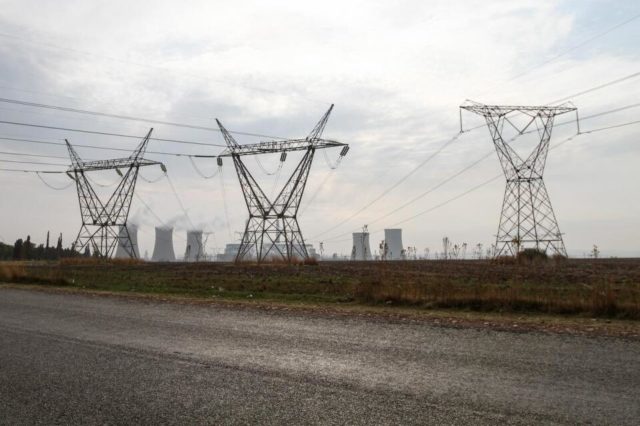This comes as Eskom, which has a debt burden of more than R400bn, has burnt R5.3bn worth of diesel in the first half of the year – R1.54bn in June alone – at its open-cycle gas turbines to keep the lights on.
DEBT-laden Eskom has been slapped with escalating costs and will now have to find an additional R1 billion in its budget to fund the new wage deal it signed with workers’ unions to end the crippling strike.
This comes as the power utility, which has a debt burden of more than R400bn, has burnt R5.3bn worth of diesel in the first half of the year – R1.54bn in June alone – at its open-cycle gas turbines to keep the lights on.
Struggling Eskom has implemented more than 60 days of varying stages of rotational load shedding from January to date, leading to overspending on diesel as it consumes more of the fuel than expected as generation capacity deteriorates.
Eskom on Tuesday signed a one-year wage agreement with three recognised labour unions – the National Union of Mineworkers (NUM), the National Union of Metalworkers of SA (Numsa) and Solidarity – after two weeks of a chaotic wildcat strike.
The agreement will see the salaries of all permanently employed workers increase by 7 percent, with the housing allowance increasing by R400 and Eskom reinstating all conditions of service that were suspended on June 30, 2021.
Eskom group executive for human resources Elsie Pule said the utility’s wage bill had been unsustainable since 2014, but Eskom had a responsibility to protect the existing jobs.
Pule, however, said that the immediate return of workers to their posts did not mean an immediate end to rotational power cuts, as the strike had put plant maintenance into abeyance.
“The overall effect of this agreement on the wage bill will be more than R1 billion over the period of the agreement. This, of course, will be a struggle for Eskom to afford,” Pule said.
“It is important to note that while the workforce is returning to work, the system will still take some time to recover.
“As a result of the strike, maintenance work has had to be postponed, and this backlog will take time to clear.”
Thousands of workers downed tools more than two weeks ago demanding salary increases of up to 12 percent, a move that pushed Eskom to implement the worst power cuts in two years.
Trade unions had then engaged with Eskom management at the Central Bargaining Forum (CBF) since last week, but negotiations were deadlocked until yesterday.
Numsa general secretary Irvin Jim said they were pleased to have finally resolved this round of wage talks, particularly given the difficult circumstances they faced.
“The conditions of service, which were unilaterally withdrawn, and which caused so much pain to our members, have been restored,” Jim said.
“We have also secured an improvement from last year, after Eskom imposed 1.5 percent.”
Following this agreement, trade unions urged their members to return to work immediately.
NUM spokesperson Livhuwani Mammburu said all their members were now “fully back at work”, but load shedding was likely to continue being implemented as workers were not responsible for the recent power cuts.
“We don’t believe our members were the ones responsible for Stage 6 load shedding. There are units that Eskom is shutting down in power stations like Komati, Hendrina and Grootvlei,” Mammburu said.
“While load shedding is happening, Eskom is busy shutting down [generation] units. So those are some of the things that are causing load shedding in the country.”
Eskom’s Stage 6 load shedding has put South Africa’s economic prospects into serious doubt, with businesses forced to shut down for at least six hours of the day, affecting investor confidence in the country.
The rand on Tuesday fell to R16.59 to the US dollar, the lowest since October 2020, due to widespread concern that the current round of load shedding could have long-term effects on the country’s economic growth.
Momentum Investments economist Sanisha Packirisamy said an increased incidence of load shedding continued to impede a faster economic recovery.
“Although Codera Analytics has shown that SA’s electricity intensity started to drop off even before the global financial crisis, Nedbank suggests that the gap between demand and supply will remain in place until 2025,” Packirisamy said.
“Additionally, headwinds to growth in SA’s top 10 export destinations point to softer demand for SA’s exports. As such, we expect the SA economy to grow at 2.2 percent in 2022 and 1.6 percent in 2023.”
– BUSINESS REPORT








